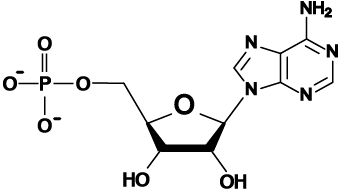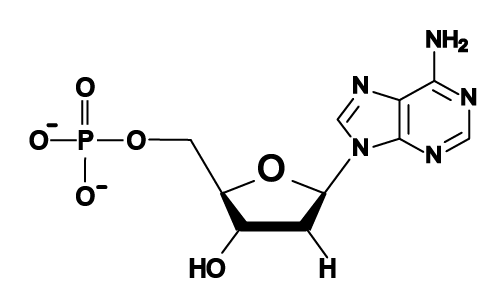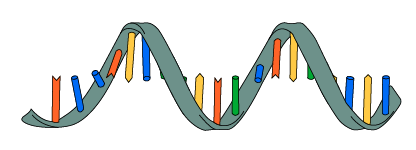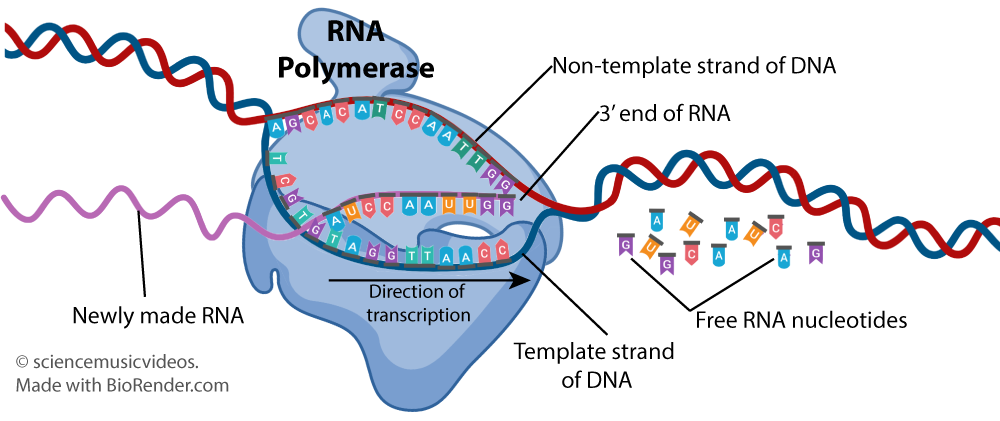Note from Mr. W. What follows is an overview of transcription. For more about how transcription is regulated and how RNA is processed in eukaryotes, go to Topics 6.5 – 6.6, Part 3.
1. Review: Transcription and Translation
For living things, DNA is the recipe that tells cells what to do and, in multicellular organisms, tells bodies how to grow and develop. As we learned in the introduction to this unit, the flow of information in cells is captured in what’s called the central dogma of molecular biology: DNA makes RNA makes protein.
The first step, the flow of information from DNA to RNA, is known as transcription, and that’s the subject of this tutorial. Start with the exercise below.
[qwiz style=”min-height: 450px !important; width: 550px !important;” qrecord_id=”sciencemusicvideosMeister1961-DNA Makes RNA Makes Protein (v2.0)”]
[h] DNA Makes RNA Makes Protein
[q labels = “top”]
[l]RNA
[f*] Great!
[fx] No, that’s not correct. Please try again.
[l]translation of RNA to protein
[f*] Correct!
[fx] No, that’s not correct. Please try again.
[l]DNA
[f*] Excellent!
[fx] No, that’s not correct. Please try again.
[l]cell membrane
[f*] Excellent!
[fx] No. Please try again.
[l]cytoplasm
[f*] Good!
[fx] No, that’s not correct. Please try again.
[l]protein
[f*] Good!
[fx] No, that’s not correct. Please try again.
[l]transcription of DNA to RNA
[f*] Great!
[fx] No, that’s not correct. Please try again.
[l]nuclear membrane
[f*] Excellent!
[fx] No, that’s not correct. Please try again.
[q] In the next tutorials, we’re going to delve into how cells direct the synthesis of RNA and protein from DNA instructions. In eukaryotic cells, that means explaining the following processes.
- [hangman] of RNA from DNA (4)
- the movement of RNA from the [hangman] to the [hangman] (6)
- [hangman], by ribosomes (7), of RNA messages into [hangman] (8)
[c]IHRyYW5zY3JpcHRpb24=[Qq]
[f]IEdvb2Qh[Qq]
[c]IG51Y2xldXM=[Qq]
[f]IEV4Y2VsbGVudCE=[Qq]
[c]IGN5dG9wbGFzbQ==[Qq]
[f]IENvcnJlY3Qh[Qq]
[c]IHRyYW5zbGF0aW9u[Qq]
[f]IEV4Y2VsbGVudCE=[Qq]
[c]IHByb3RlaW4=[Qq]
[f]IEdyZWF0IQ==[Qq]
[q] To understand these processes, let’s start by looking at the diagram below, a more detailed version of the diagram you’ve been working with.
The cell membrane is at 1. The cytoplasm is at 2. The nuclear membrane is at 4.
DNA (3) gets transcribed (5) into RNA (6). The RNA exits the nucleus through a nuclear pore (7).
[q] Three types of RNA get transcribed:
- Messenger RNA ( mRNA) (11) delivers messages to a ribosome (10).
- The ribosome is made up of protein and a second type of RNA, ribosomal RNA (rRNA),
- A third type of RNA, transfer RNA (tRNA) is shown at number 8. Transfer RNA’s job is to bring amino acids to the ribosome, where they are assembled into proteins (9).
Continue by answering the questions on the next cards.
[q labels = “top”]
[l]DNA
[f*] Great!
[fx] No. Please try again.
[l]cell membrane
[f*] Good!
[fx] No. Please try again.
[l]nuclear membrane
[f*] Excellent!
[fx] No, that’s not correct. Please try again.
[l]cytoplasm
[f*] Correct!
[fx] No. Please try again.
[l]mRNA
[f*] Excellent!
[fx] No, that’s not correct. Please try again.
[l]tRNA
[f*] Correct!
[fx] No. Please try again.
[l]RNA in the nucleus
[f*] Correct!
[fx] No. Please try again.
[l]nuclear pore
[f*] Great!
[fx] No, that’s not correct. Please try again.
[l]protein
[f*] Great!
[fx] No. Please try again.
[l]ribosome/rRNA
[f*] Good!
[fx] No. Please try again.
[l]transcription
[f*] Correct!
[fx] No, that’s not correct. Please try again.
[q multiple_choice=”true”] The type of RNA that brings amino acids to a ribosome during protein synthesis is
[c]IG1STkE=[Qq]
[f]IE5vLiBtUk5BIGlzIG1lc3NlbmdlciBSTkEuIEl0IHNlcnZlcyBhcyBhIGNvZGVkIG1lc3NhZ2UsIHRlbGxpbmcgYSByaWJvc29tZSB3aGF0IHByb3RlaW4gdG8gbWFrZS4=[Qq]
[c]IHRS TkE=[Qq]
[f]IFllcy4gdFJOQSBpcyB0cmFuc2ZlciBSTkEuIEl0IGJyaW5ncyBhbWlubyBhY2lkcyB0byBhIHJpYm9zb21lIGR1cmluZyBwcm90ZWluIHN5bnRoZXNpcy4=[Qq]
[c]IHJSTkE=[Qq]
[f]IE5vLiByUk5BIGlzIHJpYm9zb21hbMKgUk5BLiBJdCBtYWtlcyB1cCB0aGUgcmlib3NvbWUu[Qq]
[q multiple_choice=”true”] The type of RNA that (along with protein) makes up a ribosome is
[c]IG1STkE=[Qq]
[f]IE5vLiBtUk5BIGlzIA==bWVzc2VuZ2VyIFJOQS4gSXQgc2VydmVzIGFzIGEgY29kZWQgbWVzc2FnZSwgdGVsbGluZyBhIHJpYm9zb21lIHdoYXQgcHJvdGVpbiB0byBtYWtlLg==[Qq]
[c]IHRSTkE=[Qq]
[f]IE5vLiB0Uk5BIGlzIA==dHJhbnNmZXI=IFJOQS4gSXQgYnJpbmdzIGFtaW5vIGFjaWRzIHRvIGEgcmlib3NvbWUgZHVyaW5nIHByb3RlaW4gc3ludGhlc2lzLg==[Qq]
[c]IHJS TkE=[Qq]
[f]IFllcy4gclJOQSBpcyByaWJvc29tYWzCoFJOQS4gSXQgbWFrZXMgdXAgdGhlIHJpYm9zb21lLg==
Cg==Cg==[Qq][q multiple_choice=”true”] In the diagram below, which number is pointing to the ribosome?
[c]IDggwqAgwqAgwqAgwqAg[Qq][c]IDkgwqAgwqAgwqAgwqAg[Qq][c]IDEwIMKgIMKg IMKgIMKgIA==[Qq][c]IDEx
Cg==[Qq][f]IE5vLiA4IGlzIHRSTkEgKHRyYW5zZmVyIFJOQSk=[Qq]
[f]IE5vLiA5IGlzIHByb3RlaW4=[Qq]
[f]IFllcy4gMTAgaW5kaWNhdGVzIHRoZSByaWJvc29tZS4=[Qq]
[f]IE5vLiAxMSBpcyBtUk5BIChtZXNzZW5nZXIgUk5BKQ==
Cg==[Qq]
[q multiple_choice=”true”] In the diagram below, which number indicates mRNA?
[c]IDggwqAgwqAgwqAgwqAg[Qq][c]IDkgwqAgwqAgwqAgwqAg[Qq][c]IDEwIMKgIA==[Qq][c]ID Ex
Cg==[Qq][f]IE5vLiA4IGlzIHRSTkEgKHRyYW5zZmVyIFJOQSk=[Qq]
[f]IE5vLiA5IGlzIHByb3RlaW4=[Qq]
[f]IE5vLiAxMCBpbmRpY2F0ZXMgdGhlIHJpYm9zb21lLg==[Qq]
[f]IFllcy4gMTEgaXMgbVJOQSAobWVzc2VuZ2VyIFJOQSk=
Cg==[Qq]
[q multiple_choice=”true”] In the diagram below, which number indicates protein?
[c]IDggwqAgwqAgwqAgwqAg[Qq][c]IDkgwqAgwq AgwqAgwqAg[Qq][c]IDEwIMKgIMKgIMKgIA==[Qq][c]IDEx
Cg==[Qq][f]IE5vLiA4IGlzIHRSTkEgKHRyYW5zZmVyIFJOQSk=[Qq]
[f]IFllcy4gOSBpcyBwcm90ZWluLiBSZW1lbWJlciB0aGF0IHByb3RlaW5zIGFyZSBwb2x5bWVycyBvZiBhbWlubyBhY2lkcy4gVGhlIHRSTkEgdGhhdCB0aGUgcHJvdGVpbiBpcyBhdHRhY2hlZCB0byBqdXN0IGJyb3VnaHQgYW4gYW1pbm8gYWNpZCB0byB0aGUgcmlib3NvbWUgZm9yIHByb3RlaW4gc3ludGhlc2lzLg==[Qq]
[f]IE5vLiAxMCBpbmRpY2F0ZXMgdGhlIHJpYm9zb21lLg==[Qq]
[f]IE5vLiAxMSBpcyBtUk5BIChtZXNzZW5nZXIgUk5BKQ==
Cg==[Qq]
[q multiple_choice=”true”] Which type of RNA is a coded message from DNA, telling a ribosome what protein to make?
[c]IG1S TkE=[Qq]
[f]IFllcy4gbVJOQSBpcyA=bWVzc2VuZ2VyIFJOQS4gSXQgc2VydmVzIGFzIGEgY29kZWQgbWVzc2FnZSwgdGVsbGluZyBhIHJpYm9zb21lIHdoYXQgcHJvdGVpbiB0byBtYWtlLg==[Qq]
[c]IHRSTkE=[Qq]
[f]IE5vLiB0Uk5BIGlzIA==dHJhbnNmZXI=IFJOQS4gSXQgYnJpbmdzIGFtaW5vIGFjaWRzIHRvIGEgcmlib3NvbWUgZHVyaW5nIHByb3RlaW4gc3ludGhlc2lzLg==[Qq]
[c]IHJSTkE=[Qq]
[f]IE5vLiByUk5BIGlzIHJpYm9zb21hbMKgUk5BLiBJdCBtYWtlcyB1cCB0aGUgcmlib3NvbWUu[Qq]
[x]
[restart]
[/qwiz]
2. Understanding RNA
RNA is an acronym for ribonucleic acid.
Like DNA, RNA is a nucleic acid polymer, composed of repeating nucleotide monomers. However, there are also a few differences between DNA and RNA.
1. DNA and RNA are built out of different monomers.
Take a good look at the two structural formulas below. Reason your way to an answer.
[qwiz]
[q labels = “top”]
| ________________________ | ______________________ |
| The sugar has two -OH (hydroxyl) groups. | The sugar has one -OH (hydroxyl), and one H. |
[l]deoxyribonucleotide
[fx] No. Please try again.
[f*] Correct!
[l]ribonucleotide
[fx] No, that’s not correct. Please try again.
[f*] Great!
[/qwiz]
The five-carbon sugar in an RNA nucleotide is ribose, which differs by one atom from the deoxyribose sugar found in DNA. If you note that deoxyribose has one less oxygen atom than ribose does, the names of these sugars will make a lot more sense (deoxyribose is deoxygenated ribose).
Because the sugars are different, the monomers have different names. DNA monomers are deoxyribonucleotides. RNA monomers are ribonucleotides. And because of the chemical difference, the monomers of each nucleic acid aren’t interchangeable. You can’t build DNA out of RNA monomers, and vice versa.
| ribonucleotide with adenine | deoxyribonucleotide with adenine |
 |
 |
| The sugar, ribose, has two -OH (hydroxyl) groups. | The sugar, deoxyribose, has one -OH (hydroxyl), and one H. |
2. RNA is almost always single-stranded, whereas DNA is almost always double-stranded. The exceptions are found in viruses, some of which have double-stranded RNA (while others have single-stranded DNA). In cells, tRNAs and RNAs almost always have double-stranded regions, allowing them to fold up into complex shapes.

3. In the nucleotides that make up RNA, three of the bases are the same as in DNA (adenine, cytosine, and guanine). However, the fourth RNA base is uracil (instead of thymine).
4. The base pairing rules are different. As we noted above, even though RNA is mostly single-stranded, some base pairing happens within RNA molecules. There’s also base pairing between mRNA and tRNA, and between DNA and RNA.
Within RNA, or between RNAs, the base pairing rules are
- Adenine binds with uracil
- guanine binds with cytosine
When DNA is transcribed into RNA, the base pairing rules are
- adenine (in DNA) binds with uracil (in RNA)
- Thymine (in DNA) binds with adenine (in RNA)
- Guanine (in DNA or RNA) binds with cytosine (in DNA or RNA)
A little practice will clarify these relationships:
[qwiz qrecord_id=”sciencemusicvideosMeister1961-RNA Base Pairing Practice (v2.0)”]
[h]RNA Base pairing practice
[q labels = “top”]
| RNA sequence |
A |
U |
A |
G |
C |
C |
G |
U |
A |
| Matching nucleotide in RNA | ___ | ___ | ___ | ___ | ___ | ___ | ___ | ___ | __ |
[l]A
[fx] No, that’s not correct. Please try again.
[f*] Correct!
[l]U
[fx] No, that’s not correct. Please try again.
[f*] Excellent!
[l]C
[fx] No. Please try again.
[f*] Good!
[l]G
[fx] No, that’s not correct. Please try again.
[f*] Great!
[!!!]DNA TO RNA Base pairing practice [//!]
[q labels = “top”]
| DNA Sequence |
A |
T |
G |
G |
C |
A |
G |
T |
A |
| Matching nucleotides in RNA | ___ | ___ | ___ | ___ | ___ | ___ | ___ | ___ | ___ |
[l]A
[fx] No, that’s not correct. Please try again.
[f*] Excellent!
[l]U
[fx] No, that’s not correct. Please try again.
[f*] Excellent!
[l]C
[fx] No, that’s not correct. Please try again.
[f*] Excellent!
[l]G
[fx] No. Please try again.
[f*] Excellent!
[x]
[restart]
[/qwiz]
3. The process of transcription
You already know that DNA gets transcribed into RNA. But how does that work? What you’ll learn about below are the basics of transcription. Later in Unit 6, you’ll see how this process is elaborated upon in eukaryotes.
DNA codes for genes. A gene is typically defined as a unit of heredity. But since we’re looking at DNA, RNA, and Protein, we can think of this a little differently. Think of a gene as a sequence of DNA that gets transcribed into RNA, or which gets translated into protein, (or both).
Here’s how a gene is organized.

- The part that’s labeled GENE is the DNA that’s going to be transcribed.
- The promoter is DNA before the gene that acts as a signal. That signal says “transcription starts here,” and it tells a variety of proteins and enzymes to bind and to start transcribing.
- The template strand is the strand that is going to be transcribed. It’s also called the non-coding strand.
Transcription is carried out by a team of enzymes and proteins. The key enzyme in this process is RNA polymerase. In the diagram below, RNA polymerase is represented as RNAP.

Transcription starts with RNA polymerase binding at the promoter.
After binding, RNA polymerase moves down the length of the gene.
As it does, it forces the double-stranded DNA apart. This allows free-floating RNA nucleotides that are in the nucleus to bind with the exposed DNA bases. Keep in mind that RNA polymerase doesn’t know which base should come next. That information is in the template strand.
Once the correct RNA nucleotide is in place, RNA polymerase creates a sugar-phosphate bond between the new nucleotide and the one before it. In the diagram above, the blue strand that’s attached to the template strand above is the new RNA.
Here’s a more detailed depiction of transcription showing RNA polymerase, free RNA nucleotides, and the template strand.

Pair up the template strand below with free-floating nucleotides. It’s exactly what you did above, except that now you have the context for it.
[qwiz qrecord_id=”sciencemusicvideosMeister1961-More RNA Base Pairing Practice (v2.0)”]
[h]More RNA Base Pairing Practice
[q labels = “top”]
| Transcribed RNA | ___ | ___ | ___ | ___ | ___ | ___ | ___ | ___ | ___ |
| Template strand of DNA |
T |
T |
A |
C |
G |
T |
C |
G |
G |
[l]A
[fx] No. Please try again.
[f*] Good!
[l]G
[fx] No, that’s not correct. Please try again.
[f*] Correct!
[l]U
[fx] No. Please try again.
[f*] Great!
[l]C
[fx] No, that’s not correct. Please try again.
[f*] Great!
[x]
[restart]
[/qwiz]
When the RNA polymerase reaches the end of the gene, transcription ends. The newly transcribed RNA is released, and the RNA polymerase detaches from the DNA
Here’s a quick summary of what happens in transcription:
- RNA polymerase binds at a promoter for a gene (a segment of DNA that codes for a protein or RNA).
- By partially opening up the DNA, RNA polymerase allows RNA nucleotides to bind with the template strand.
- When the correct RNA nucleotide is in place, RNA polymerase catalyzes a sugar-phosphate bond between the new RNA nucleotide and the one before it on the growing RNA strand.
- When RNA polymerase gets to the end of the gene, it detaches from the DNA. The RNA transcript is released.
There are additional processing steps involved in the transcription of eukaryotic RNA, but we’ll cover them in a later tutorial in Unit 6.
4. Checking Understanding: Transcription
[qwiz random=”true” qrecord_id=”sciencemusicvideosMeister1961-Checking Understanding, Transcription (v2.0)”]
[h] Quiz: Transcription
[i]
[q] If a DNA template strand is ATTGCATCGATT, then the RNA transcribed from this strand will be [textentry suggest=”false”]
[c]IFVBQUNHVU FHQ1VBQQ==[Qq]
[f]IEV4Y2VsbGVudCEgSWYgYSBETkEgdGVtcGxhdGUgaXMgQVRUR0NBVENHQVRULCB0aGUgUk5BIHRyYW5zY3JpcHQgd2lsbCBiZSBVQUFDR1VBR0NVQUEu[Qq]
[c]IEVudGVyIHdvcmQ=[Qq]
[c]ICo=[Qq]
[f]IE5vLiBSZW1lbWJlciB0aGUgcnVsZXMgZm9yIHRyYW5zY3JpcHRpb24gb2YgRE5BIHRvIFJOQS4gQSBpcyB0cmFuc2NyaWJlZCB0byBVOyBUIHRvIEE7IEcgdG8gQzsgYW5kIEMgdG8gRy4=[Qq]
[q multiple_choice=”true”] In a gene, the strand which gets transcribed into RNA is called the
[c]IHRlbXBsYXRl IHN0cmFuZA==[Qq]
[f]IFllcy7CoFRoZSBETkEgc3RyYW5kIHRoYXQgZ2V0cyB0cmFuc2NyaWJlZCBpbnRvIFJOQSBpcyBjYWxsZWQgdGhlIA==dGVtcGxhdGUgc3RyYW5kLg==[Qq]
[c]IHRyYW5zY3JpcHRpb24gdW5pdA==[Qq]
[f]IE5vLsKgVGhlIHRlcm0gdHJhbnNjcmlwdGlvbiB1bml0IG1lYW5zIA==JiM4MjIwO2HCoA==[Qq]stretch of DNA being transcribed into an RNA molecule” (biology-online.org). It’s roughly equivalent to “gene.”
[c]IHByb21vdGVy[Qq]
[f]IE5vLiBUaGUgcHJvbW90ZXIgaXMgYSBzZXF1ZW5jZSBvZiBETkEgdGhhdCBhY3RzIGFzIGEgc2lnbmFsLCB0ZWxsaW5nIFJOQSBwb2x5bWVyYXNlIHdoZXJlIHRvIGJpbmQu
Cg==[Qq]
[q multiple_choice=”true”] The sequence of DNA which acts as a signal, telling RNA polymerase where to bind, is called the
[c]IFJOQSBiaW5kaW5nIHNpdGU=[Qq]
[f]IE5vLiBJdCBpcyBjZXJ0YWlubHkgYW4gUk5BIGJpbmRpbmcgc2l0ZSwgYnV0IHRoZXJlJiM4MjE3O3MgYSBtb3JlIHNwZWNpZmljIHRlcm0u[Qq]
[c]IGdlbmUgaW5kaWNhdG9yIHNlcXVlbmNl[Qq]
[f]IE5vLiBJdCBpcyBhIHNlcXVlbmNlIHRoYXQgaW5kaWNhdGVzIHRoZSBzdGFydCBvZiBhIGdlbmUsIGJ1dMKgdGhlcmUmIzgyMTc7cyBhIG1vcmUgc3BlY2lmaWMgKGFuZCBhY2NlcHRlZCkgdGVybS4=[Qq]
[c]IHByb2 1vdGVy[Qq]
[f]IFllcy4gVGhlIHNlcXVlbmNlIG9mIEROQSB3aGljaCBhY3RzIGFzIGEgc2lnbmFsLCB0ZWxsaW5nIFJOQSBwb2x5bWVyYXNlIHdoZXJlIHRvIGJpbmQsIGlzIGNhbGxlZCB0aGUgcHJvbW90ZXI=Lg==
Cg==[Qq]
[q multiple_choice=”true”] A sequence of DNA that gets transcribed into RNA, or which gets translated into protein, (or both), is a
[c]IHRlbXBsYXRl[Qq]
[f]IE5vLiBBIHRlbXBsYXRlIGlzIGEgbW9yZSBnZW5lcmFsIGNvbmNlcHQuIFZlcnNpb24gMi4xMSBvZiB0aGUgQXBwbGUgRGljdGlvbmFyeSBkZWZpbmVzIGEgdGVtcGxhdGU=IGFzICYjODIyMDthIG1vbGVjdWxlIHRoYXQgYWN0cyBhcyBhIHBhdHRlcm4gZm9yIHRoZSBzZXF1ZW5jZSBvZiBhc3NlbWJseSBvZiBhIHByb3RlaW4sIG51Y2xlaWMgYWNpZCwgb3IgYW5vdGhlciBsYXJnZSBtb2xlY3VsZS4mIzgyMjE7IFRoZSB0ZXJtIHlvdSYjODIxNztyZSBsb29raW5nIGZvciBjYW4gYWxzbyBiZSBkZWZpbmVkIGFzIGEgdW5pdCBvZiBoZXJlZGl0eQ==Lg==[Qq]
[c]IGdl bmU=[Qq]
[f]IFllcy4gQSBnZW5lIGlzwqBhwqA=c2VxdWVuY2Ugb2YgRE5BIHRoYXQgZ2V0cyB0cmFuc2NyaWJlZCBpbnRvIFJOQSwgb3Igd2hpY2ggZ2V0cyB0cmFuc2xhdGVkIGludG8gcHJvdGVpbiwgKG9yIGJvdGgpLg==[Qq]
[c]IHRyYW5zY3JpcHRpb24gZmFjdG9y[Qq]
[f]IE5vLiBBIHRyYW5zY3JpcHRpb24gZmFjdG9yIGlzIGEgcHJvdGVpbg==IHRoYXQgYmluZHMgdG8gc3BlY2lmaWMgRE5BIHNlcXVlbmNlcw==LCB0aGVyZWJ5IGNvbnRyb2xsaW5nIHRoZSByYXRlIG9mIA==[Qq]transcription of genetic information from DNA to messenger RNA (Wikipedia). The term you’re looking for can also be defined as a unit of heredity.
[q multiple_choice=”true”] In the diagram below, RNA polymerase is indicated by the number
[c]IDHCoCDCoCDCoCA=[Qq][c]IDLCoCDCoCDigIM=[Qq][c]IMKgM8KgIM KgIMKgIMKg[Qq][c]IMKgNMKgIMKgIMKgIMKg[Qq][c]IMKgNQ==
Cg==[Qq][f]IE5vLiBOdW1iZXIgMSBpbmRpY2F0ZXMgdGhlIHByb21vdGVyLg==[Qq]
[f]IE5vLiBOdW1iZXIgMiBpcyB0aGUgUk5BIHRyYW5zY3JpcHQu[Qq]
[f]IFllcy4gTnVtYmVyIDMgaXMgUk5BIHBvbHltZXJhc2Uu[Qq]
[f]IE5vLiBOdW1iZXIgNCBpcyB0aGUgZ2VuZS4=[Qq]
[f]IE5vLiBOdW1iZXIgNcKgaXMgdGhlIHRlbXBsYXRlIHN0cmFuZC4=
Cg==[Qq]
[q multiple_choice=”true”] In the diagram below, the RNA transcript is indicated by the number
[c]IDHCoCDCoCDCoCA=[Qq][c]IDLCoCDCoC DCoCDCoA==[Qq][c]IMKgM8KgIMKgIMKgIA==[Qq][c]IMKgNMKgIMKgIMKgIMKg[Qq][c]IMKgNQ==
Cg==[Qq][f]IE5vLiBOdW1iZXIgMSBpbmRpY2F0ZXMgdGhlIHByb21vdGVyLg==[Qq]
[f]IFllcy4gTnVtYmVyIDIgaXMgdGhlIFJOQSB0cmFuc2NyaXB0Lg==[Qq]
[f]IE5vLiBOdW1iZXIgMyBpcyBSTkEgcG9seW1lcmFzZS4=[Qq]
[f]IE5vLiBOdW1iZXIgNCBpcyB0aGUgZ2VuZS4=[Qq]
[f]IE5vLiBOdW1iZXIgNsKgaXMgdGhlIHRlbXBsYXRlIHN0cmFuZC4=
Cg==[Qq]
[q multiple_choice=”true”] The function of RNA polymerase is to
[c]IGluZGljYXRlIHdoZXJlIHRyYW5zY3JpcHRpb24gc2hvdWxkIHN0YXJ0Lg==[Qq]
[f]IE5vLsKgSW5kaWNhdGluZyB3aGVyZSB0cmFuc2NyaXB0aW9uIHN0YXJ0cyBpcyB0aGUgZnVuY3Rpb24gb2YgdGhlIHByb21vdGVyLg==[Qq]
[c]IHByb3ZpZGUgdGhlIGluZm9ybWF0aW9uIGluZGljYXRpbmcgdGhlIGNvcnJlY3Qgc2VxdWVuY2Ugb2YgbnVjbGVvdGlkZXMgaW4gYW4gUk5BIHRyYW5zY3JpcHQ=[Qq]
[f]IE5vLsKgUHJvdmlkaW5nIHRoZSBpbmZvcm1hdGlvbiBpbmRpY2F0aW5nIHRoZSBjb3JyZWN0IHNlcXVlbmNlIG9mIG51Y2xlb3RpZGVzIGluIGFuIFJOQSB0cmFuc2NyaXB0IGlzIHRoZSBmdW5jdGlvbiBvZiB0aGUgdGVtcGxhdGUgc3RyYW5kLg==[Qq]
[c]IGNyZWF0ZSBzdWdhci1waG9zcGhhdGUgYm9uZHMgYmV0d2Vlbi BvbmUgUk5BIG51Y2xlb3RpZGUgYW5kIHRoZSBuZXh0IG9uZS4=[Qq]
[f]IFllcy4gQ3JlYXRpbmcgc3VnYXItcGhvc3BoYXRlIGJvbmRzIGJldHdlZW4gb25lIFJOQSBudWNsZW90aWRlIGFuZCB0aGUgbmV4dCBvbmUgaXMgdGhlIGZ1bmN0aW9uIG9mIFJOQSBwb2x5bWVyYXNlLg==
Cg==[Qq]
[q multiple_choice=”true”] In the diagram below, the gene is indicated by the number
[c]IDHCoCDCoCDCoCDCoA==[Qq][c]IDLCoCDCoCDCoCDCoCA=[Qq][c]IMKgM8KgIMKgIMKgIMKgIA==[Qq][c]IMKgNMKgIM KgIMKg4oCD[Qq][c]IMKgNQ==
Cg==[Qq][f]IE5vLiBOdW1iZXIgMSBpbmRpY2F0ZXMgdGhlIHByb21vdGVyLg==[Qq]
[f]IE5vLiBOdW1iZXIgMiBpcyB0aGUgUk5BIHRyYW5zY3JpcHQu[Qq]
[f]IE5vLiBOdW1iZXIgMyBpcyBSTkEgcG9seW1lcmFzZS4=[Qq]
[f]IFllcy4gTnVtYmVyIDQgaXMgdGhlIGdlbmUu[Qq]
[f]IE5vLiBOdW1iZXIgNcKgaXMgdGhlIHRlbXBsYXRlIHN0cmFuZC4=
Cg==[Qq]
[q multiple_choice=”true”] In RNA, the sugar-phosphate bond between adjacent nucleotides (nucleotides that are next to one another in the same strand) is a
[c]IGh5ZHJvZ2VuIGJvbmQ=[Qq]
[f]IE5vLiBEdXJpbmcgdHJhbnNjcmlwdGlvbiwgaHlkcm9nZW4gYm9uZHMgZm9ybSB3aGVuIFJOQSBudWNsZW90aWRlcyBib25kIHdpdGggY29tcGxlbWVudGFyeSBudWNsZW90aWRlcyBvbiB0aGUgdGVtcGxhdGUgc3RyYW5kLg==[Qq]
[c]IGNvdmFsZW 50IGJvbmQ=[Qq]
[f]IFllcy7CoFN1Z2FyLXBob3NwaGF0ZSBib25kcyBhcmUgY292YWxlbnQgYm9uZHMu[Qq]
[c]IGlvbmljIGJvbmQ=[Qq]
[f]IE5vLsKgVGhlIGJvbmQgYmV0d2VlbiBhZGphY2VudCBudWNsZW90aWRlcyBpcyB0aGUgb25lIHRoYXQgaW52b2x2ZXMgc2hhcmluZyBlbGVjdHJvbnMuIFdoaWNoIHR5cGUgb2YgYm9uZCBpcyB0aGF0Pw==
Cg==[Qq]
[q multiple_choice=”true”] In the diagram below, the template strand is indicated by the number
[c]IDHCoCDCoCDCoA==[Qq][c]IDLCoCDCoCDCoCA=[Qq][c]IMKgM8KgIMKgIOKAgw==[Qq][c]IMKgNMKgIMKg4oCD[Qq][c]IMKg NQ==
Cg==[Qq][f]IE5vLiBOdW1iZXIgMSBpbmRpY2F0ZXMgdGhlIHByb21vdGVyLg==[Qq]
[f]IE5vLiBOdW1iZXIgMiBpcyB0aGUgUk5BIHRyYW5zY3JpcHQu[Qq]
[f]IE5vLiBOdW1iZXIgMyBpcyBSTkEgcG9seW1lcmFzZS4=[Qq]
[f]IE5vLiBOdW1iZXIgNCBpcyB0aGUgZ2VuZS4=[Qq]
[f]IFllcy4gTnVtYmVyIDXCoGlzIHRoZSB0ZW1wbGF0ZSBzdHJhbmQu
Cg==[Qq]
[q multiple_choice=”true”] During transcription, the temporary bond that forms between DNA nucleotides on the template strand and RNA nucleotides on the growing RNA strand is a
[c]IGh5ZHJvZ2 VuIGJvbmQ=[Qq]
[f]IFllcy4gRHVyaW5nIHRyYW5zY3JpcHRpb24sIGh5ZHJvZ2VuIGJvbmRzIGZvcm0gd2hlbiBSTkEgbnVjbGVvdGlkZXMgYm9uZCB3aXRoIGNvbXBsZW1lbnRhcnkgbnVjbGVvdGlkZXMgb24gdGhlIHRlbXBsYXRlIHN0cmFuZC4=[Qq]
[c]IGNvdmFsZW50IGJvbmQ=[Qq]
[f]IE5vLiBDb3ZhbGVudCBib25kcyBhcmUgd2hhdCBob2xkIGVhY2ggc3RyYW5kIG9mIFJOQSAob3IgRE5BKSB0b2dldGhlci4gVGhlIGJvbmQgYmV0d2VlbiBjb21wbGVtZW50YXJ5IG51Y2xlb3RpZGVzIGlzIG11Y2ggd2Vha2VyLiBJdCYjODIxNztzIHRoZSBzYW1lIGtpbmQgb2YgYm9uZCB0aGF0IG9jY3VycyBiZXR3ZWVuIHdhdGVyIG1vbGVjdWxlcy4=[Qq]
[c]IGlvbmljIGJvbmQ=[Qq]
[f]IE5vLsKgVGhlIHRlbXBvcmFyeSBib25kIHRoYXQgZm9ybXMgYmV0d2VlbiBETkEgbnVjbGVvdGlkZXMgb24gdGhlIHRlbXBsYXRlIHN0cmFuZCBhbmQgUk5BIG51Y2xlb3RpZGVzIG9uIHRoZSBncm93aW5nIFJOQSBzdHJhbmQgaXMgbXVjaCB3ZWFrZXIgdGhhbiBhbiBpb25pYyBib25kLiBJdCYjODIxNztzIGJhc2VkIG9uIHBhcnRpYWwgbmVnYXRpdmUgb3IgcG9zaXRpdmUgY2hhcmdlcywgYW5kIGl0JiM4MjE3O3MgdGhlIHNhbWUga2luZCBvZiBib25kIHRoYXQgb2NjdXJzIGJldHdlZW4gd2F0ZXIgbW9sZWN1bGVzLg==
Cg==[Qq]
[q multiple_choice=”true”] In the diagram below, the promoter is indicated by the number
[c]IDHCoCDCoC DCoCDCoA==[Qq][c]IDLCoCDCoCDCoCDCoA==[Qq][c]IMKgM8KgIMKgIMKgIMKg[Qq][c]IMKgNMKgIOKAgw==[Qq][c]IMKgNQ==
Cg==[Qq][f]IFllcy4gTnVtYmVyIDEgaW5kaWNhdGVzIHRoZSBwcm9tb3Rlci4=[Qq]
[f]IE5vLiBOdW1iZXIgMiBpcyB0aGUgUk5BIHRyYW5zY3JpcHQu[Qq]
[f]IE5vLiBOdW1iZXIgMyBpcyBSTkEgcG9seW1lcmFzZS4=[Qq]
[f]IE5vLiBOdW1iZXIgNCBpcyB0aGUgZ2VuZS4=[Qq]
[f]IE5vLiBOdW1iZXIgNcKgaXMgdGhlIHRlbXBsYXRlIHN0cmFuZC4=[Qq]
[q] Review: The monomers of protein are [hangman] acids
[c]IGFtaW5v[Qq]
[q] Transcription is making RNA from a [hangman] template
[c]IEROQQ==[Qq]
[q] Review: Replication is making [hangman] from DNA
[c]IEROQQ==[Qq]
[q] Translation occurs when a [hangman] makes [hangman] following instructions in messenger RNA.
[c]cmlib3NvbWU=[Qq]
[c]IHByb3RlaW4=[Qq]
[q] The central [hangman] of molecular genetics is that DNA makes RNA makes protein
[c]IGRvZ21h[Qq]
[q] In eukaryotes, transcription occurs in the [hangman], and translation occurs in the [hangman].
[c]IG51Y2xldXM=[Qq]
[c]Y3l0b3BsYXNt[Qq]
[q] The sugar in DNA is [hangman]. The sugar in RNA is [hangman]
[c]IGRlb3h5cmlib3Nl[Qq]
[c]IHJpYm9zZQ==[Qq]
[q] Whereas DNA has the nitrogenous base thymine, RNA has [hangman].
[c]IHVyYWNpbA==[Qq]
[q] In RNA, cytosine bonds with [hangman].
[c]IGd1YW5pbmU=[Qq]
[q] Within RNA, adenine bonds with [hangman].
[c]IHVyYWNpbA==[Qq]
[q] Review: The monomers of nucleic acids are [hangman].
[c]IG51Y2xlb3RpZGVz[Qq]
[q] The number of strands in RNA is usually
[textentry single_char=”true”]
[c]ID E=[Qq]
[f]IENvcnJlY3QhIFRoZSBudW1iZXIgb2Ygc3RyYW5kcyBpbiBSTkEgaXMgMSAob25lKQ==[Qq]
[c]ICo=[Qq]
[f]IE5vLiBSTkEgaXMgdXN1YWxseSBhIHNpbmdsZS1zdHJhbmRlZCBtb2xlY3VsZS4=[Qq]
[q] The type of RNA that makes up ribosomes is [hangman] RNA
[c]IHJpYm9zb21hbA==[Qq]
[q] Review: The enzyme that breaks apart the double helix during replication is [hangman]
[c]IGhlbGljYXNl[Qq]
[q] The enzyme that connects new RNA nucleotides to a growing RNA strand during transcription is RNA [hangman]
[c]cG9seW1lcmFzZQ==[Qq]
[q] In the diagram below, the template strand is
[textentry single_char=”true”]
[c]ID I=[Qq]
[f]IENvcnJlY3QhIFRoZSB0ZW1wbGF0ZSBzdHJhbmQgKDIpIGlzIHRoZSBvbmUgdGhhdCBSTkEgcG9seW1lcmFzZSBpcyAmIzgyMjA7cmVhZGluZy4mIzgyMjE7[Qq]
[c]ICo=[Qq]
[f]IE5vLiBUaGUgdGVtcGxhdGUgc3RyYW5kIG9mIEROQcKgIGlzIHRoZSBvbmUgdGhhdCBSTkEgcG9seW1lcmFzZSBpcyAmIzgyMjA7cmVhZGluZy4mIzgyMjE7[Qq]
[q] In the diagram below, newly synthesized RNA is at
[textentry single_char=”true”]
[c]ID E=[Qq]
[f]IE5pY2UhIFRoZSBuZXdseSBzeW50aGVzaXplZCBSTkEgaXMgYXQgMS4=[Qq]
[c]ICo=[Qq]
[f]IE5vLiBIZXJlJiM4MjE3O3MgYSBoaW50LiBXaGVyZWFzIEROQSBpcyBhIGRvdWJsZS1zdHJhbmRlZCBtb2xlY3VsZSwgUk5BIGlzIHNpbmdsZS1zdHJhbmRlZC4=[Qq]
[q] In the diagram below, free RNA nucleotides that can be incorporated into the newly transcribed RNA are at
[textentry single_char=”true”]
[c]ID M=[Qq]
[f]IEF3ZXNvbWUhIEZyZWUgbnVjbGVvdGlkZXMgYXJlIGF0IDMu[Qq]
[c]ICo=[Qq]
[f]IE5vLiBIZXJlJiM4MjE3O3MgYSBoaW50LiBGaW5kIG51Y2xlb3RpZGUgbW9ub21lcnMgdGhhdCBhcmVuJiM4MjE3O3QgaW5jb3Jwb3JhdGVkIGludG8gYSBsYXJnZXIgcG9seW1lci4=[Qq]
[x]
If you want more practice, please press the restart button below. Otherwise, follow the links below.
[restart]
[/qwiz]
What’s next?
- Proceed to Topic 6.4, Part 1: The Genetic Code, the next tutorial in AP Bio Unit 6
- Note: For more about how transcription is regulated and how RNA is processed in eukaryotes, go to Topics 6.5 – 6.6, Part 3.


